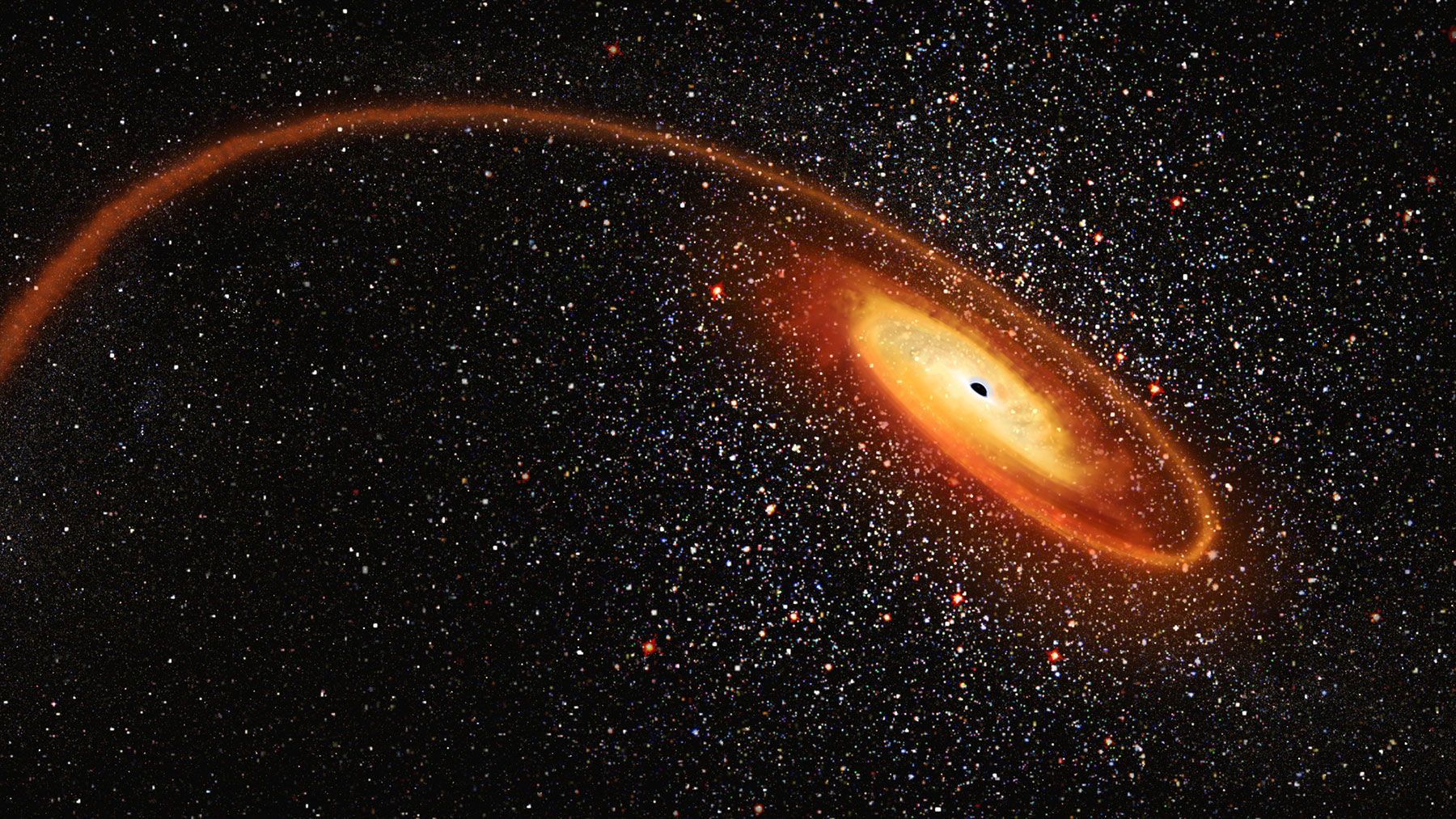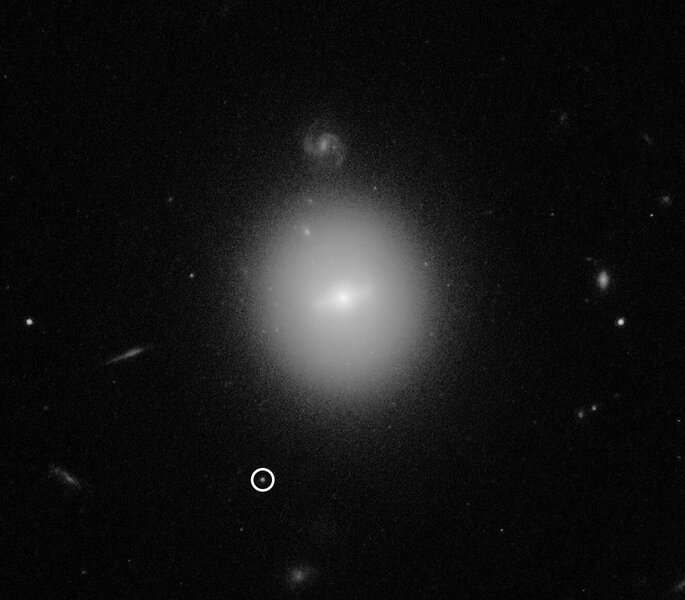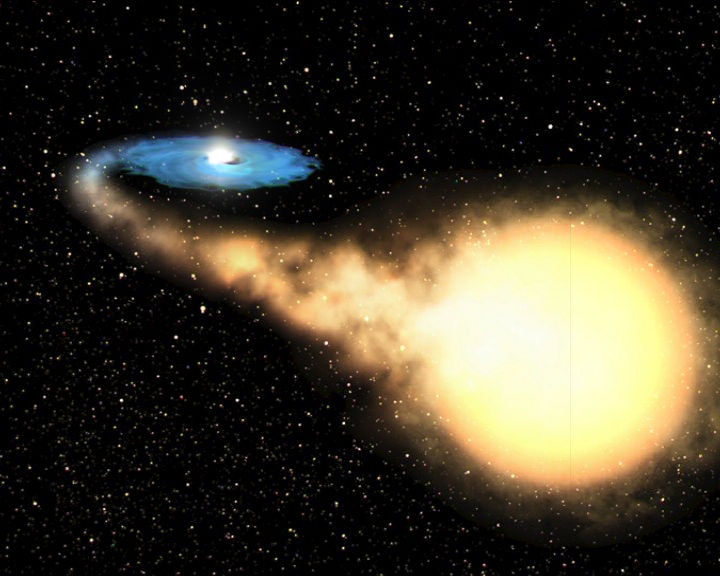Create a free profile to get unlimited access to exclusive videos, sweepstakes, and more!
It looks like a star 750 million light years away *was* torn apart by a mid-sized black hole

In 2006, the light from a ridiculously violent event reached Earth. Hugely diminished by the time it reached us, it started out as an extremely powerful blast of X-rays… but unlike events such as a typical supernova or other high-energy processes which come and go rather quickly, this one faded slowly, visibly dropping in brightness over the course of more than ten years.
Not too many things can behave this way, and the most common is also one of the scariest: An entire star being ripped to shreds by the gravity of a black hole.
When a team of astronomers published their observations of this event — which is called 3XMM J215022.4−055108 (the name is due to it being observed by the XMM-Newton observatory together with its coordinates on the sky) — they concluded the most likely culprit was an intermediate mass black hole, a theorized but still unproven class of such bottomless pits.
Now, new Hubble observations combined with XMM data add a lot of weight (so to speak) to this idea. While it’s still not proven, this is now one the best candidates going of these elusive objects.
I wrote all about this event when that paper was published, and all the background is there. But to recap:
If a star gets too close to a black hole, very bad things happen. The black hole has incredibly strong gravity, but what can be more important is the change in gravity the star feels across its width. Because black holes are small, stars can get close to them, and because the force of gravity gets stronger the closer you get to the source, the side of the star closer to the black hole can feel a lot more gravity than the opposite side of the star. The outcome is the star gets stretched.
If the change in gravity is enough, the star can be stretched so much it is literally torn apart! The change in gravity you feel with distance is called tides, so this event is called a tidal disruption event, or TDE.
Pretty prosaic for a star being pulled apart like taffy by a black hole.
In this case, the star ripped apart generated a vast amount of energy, emitting more than a billion times the entire energy output of the Sun in just X-rays! The galaxy is about 750 million light years from Earth, and the event occurred about 40,000 light years from the center of the galaxy at least, well outside the main body. Sitting right at that spot is a dot of light… and in the original observations it wasn’t possible to say what that dot was.
Now though it is. The new Hubble observations clearly show the dot of light is extended in size, resolved as a fuzzy circle rather than a single dot. This object is either a very large globular cluster, or, more likely, an ultra-compact dwarf galaxy, the remains of a small dwarf galaxy after encounters with a bigger galaxy have torn away everything but the galaxy’s core.
Either way, this is the right environment to find big black holes. The crowded environment there means lots of food for black holes — stars can collide, or fall into black holes, or even black holes formed from stars there can eat other and grow — so it’s a prime spot to find them.
Even better, the way a star gets torn apart changes with the mass of the black hole, which changes the light we see from such an event. This is why this event is so exciting: Physical models of the light from 3XMM J215022.4−055108 indicate the black hole had a mass of 50,000 times the mass of the Sun.
Why is that a big deal? Stellar mass black holes (ones formed when massive stars explode) are probably the most common kind, and have masses from roughly 5–50 times the mass of the Sun. Supermassive black holes, found at the centers of most galaxies, have millions or billions of times the Sun’s mass. We have lots of examples of both of these kinds of black holes, and no astronomer seriously doubts they exist.
But that huge mass gap in the middle is weird. Black holes of this mass are the intermediate mass black holes, and the problem is we’ve never definitively seen one. We have lots of candidates (heck, there are five candidates orbiting close in to the supermassive black hole in the center of the Milky Way), but measuring their mass is difficult, so we can't be certain.
That makes this one a pretty dang good bet. The X-rays, the location… both point to this being a middle-weight black hole.
And that's great news! There’s some thought that supermassive black holes grow from intermediate mass ones, so the more of these we find the better we’ll understand them, and the more we learn about black holes in general, including their (very very very) big brothers.




























